Japan's Extensive Railway Network: The World's Most Advanced Train System
Explore Japan's world-class railway system, from high-speed Shinkansen to intricate local train networks, and learn why it's considered the best in the world.

- RailQuest Team
- 4 min read
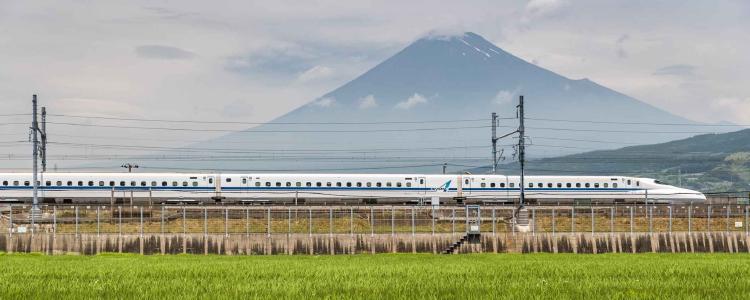
Japan’s Extensive Railway Network 🚆
Introduction
Japan’s railway system is one of the most advanced, efficient, and extensive in the world. From the world-famous Shinkansen bullet trains to intricate urban subway networks, Japan’s trains serve millions of passengers daily, ensuring punctuality, comfort, and safety.

Caption: A Shinkansen bullet train passing through the countryside.
A Brief History of Japanese Railways
Japan’s railway system has evolved over 150 years, shaping the country’s economy and urban development.
- 1872 – Japan’s first railway line opens between Tokyo (Shimbashi) and Yokohama.
- 1964 – The world’s first high-speed rail, the Shinkansen, is introduced before the Tokyo Olympics.
- 1987 – The state-run Japanese National Railways (JNR) is privatized, leading to the creation of the Japan Railways (JR) Group.
Today, Japan’s rail system consists of JR Group networks, private railways, subways, and regional trains, seamlessly connecting every part of the country.

Caption: The first Japanese steam locomotive in 1872.
The Shinkansen: Japan’s High-Speed Marvel
🚅 What Makes the Shinkansen Special?
Japan’s Shinkansen (新幹線), or bullet train, is one of the fastest and safest high-speed rail systems in the world.
✅ Speeds up to 320 km/h (200 mph)
✅ Zero fatalities since its launch in 1964
✅ Trains run every 3-5 minutes
✅ Earthquake-resistant technology
The Shinkansen revolutionized travel in Japan, reducing travel times drastically—for example, a journey from Tokyo to Osaka takes just 2.5 hours instead of 6-7 hours by car.
🚄 Major Shinkansen Routes
- Tokaido Shinkansen (東海道新幹線) – Connects Tokyo, Nagoya, Kyoto, and Osaka.
- Sanyo Shinkansen (山陽新幹線) – Extends from Osaka to Hiroshima and Fukuoka.
- Tohoku Shinkansen (東北新幹線) – Links Tokyo with northern Japan (Sendai, Aomori).
- Hokkaido Shinkansen (北海道新幹線) – Connects Honshu and Hokkaido via the Seikan Tunnel.
- Kyushu Shinkansen (九州新幹線) – Covers Fukuoka, Kumamoto, and Kagoshima.

Caption: A Shinkansen train speeding towards Tokyo.
Japan Railways (JR) and Private Railways
The Japan Railways (JR) Group operates the majority of long-distance and suburban train services. It consists of six regional companies:
🚉 JR East (JR東日本) – Covers Tokyo, Tohoku, and Hokkaido.
🚉 JR Central (JR東海) – Manages the Tokaido Shinkansen.
🚉 JR West (JR西日本) – Operates trains in the Kansai region.
🚉 JR Kyushu (JR九州) – Serves Kyushu’s train network.
🚉 JR Shikoku (JR四国) – Covers the island of Shikoku.
🚉 JR Hokkaido (JR北海道) – Operates trains in Hokkaido.
Apart from JR, private railway companies like Keio, Odakyu, Hankyu, and Tobu operate commuter trains in urban areas.
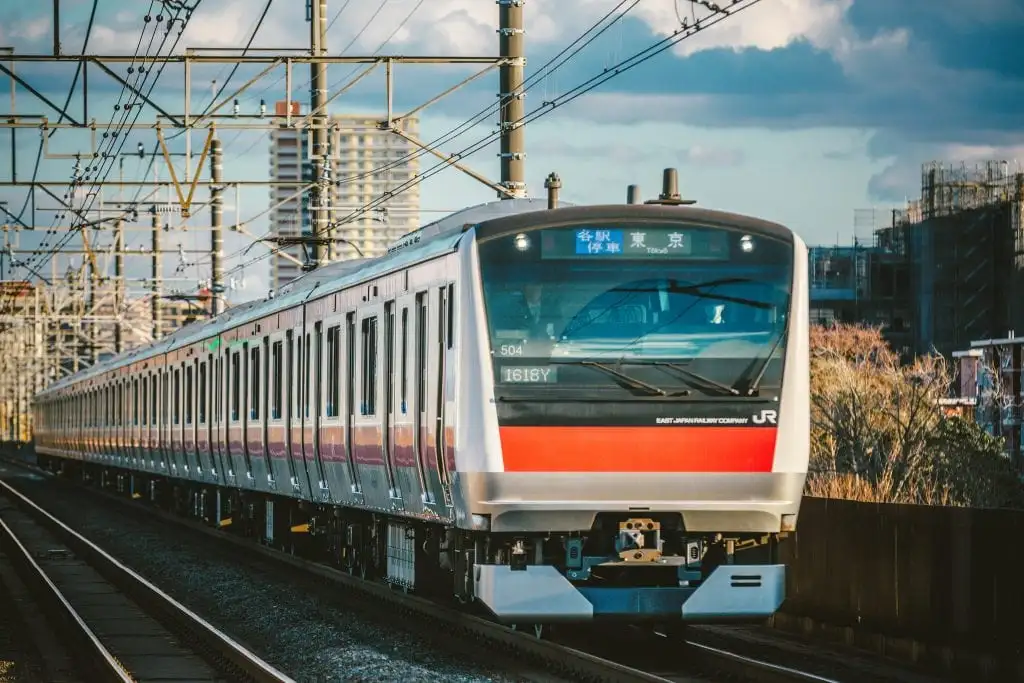
Caption: A JR East commuter train in Tokyo.
Tokyo’s Complex Metro System
Tokyo’s subway network is one of the most intricate in the world, consisting of two separate operators:
1️⃣ Tokyo Metro (東京メトロ) – 9 lines covering central Tokyo.
2️⃣ Toei Subway (都営地下鉄) – 4 lines operated by the Tokyo Metropolitan Government.
With over 13 billion passengers per year, Tokyo’s subway is punctual, efficient, and easy to navigate with English signage and IC card payment systems like Suica and Pasmo.
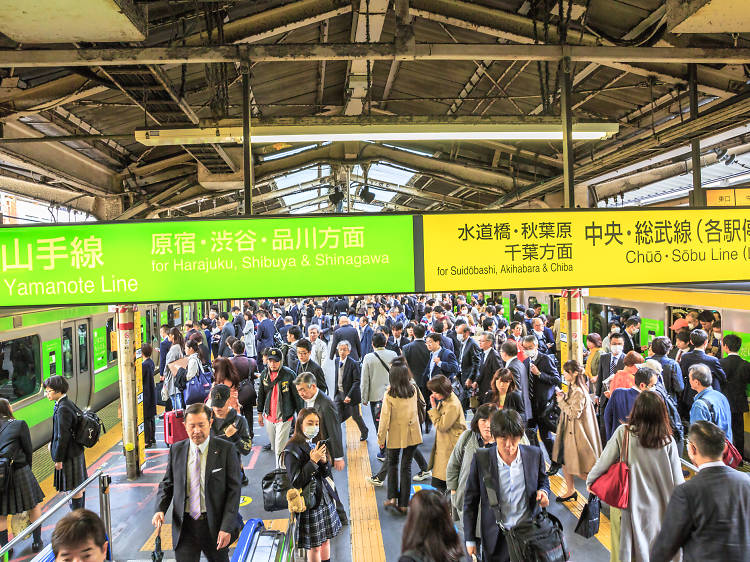
Caption: A busy Tokyo Metro station during rush hour.
The Japan Rail Pass: A Must-Have for Tourists
Foreign visitors can take advantage of the Japan Rail Pass (JR Pass), a cost-effective way to travel across Japan by train.
💳 JR Pass Benefits
✅ Unlimited travel on JR trains, including most Shinkansen
✅ Available for 7, 14, or 21 days
✅ Includes travel on JR buses and ferries
📍 Where to Buy
The JR Pass must be purchased before arriving in Japan from authorized travel agencies or online.
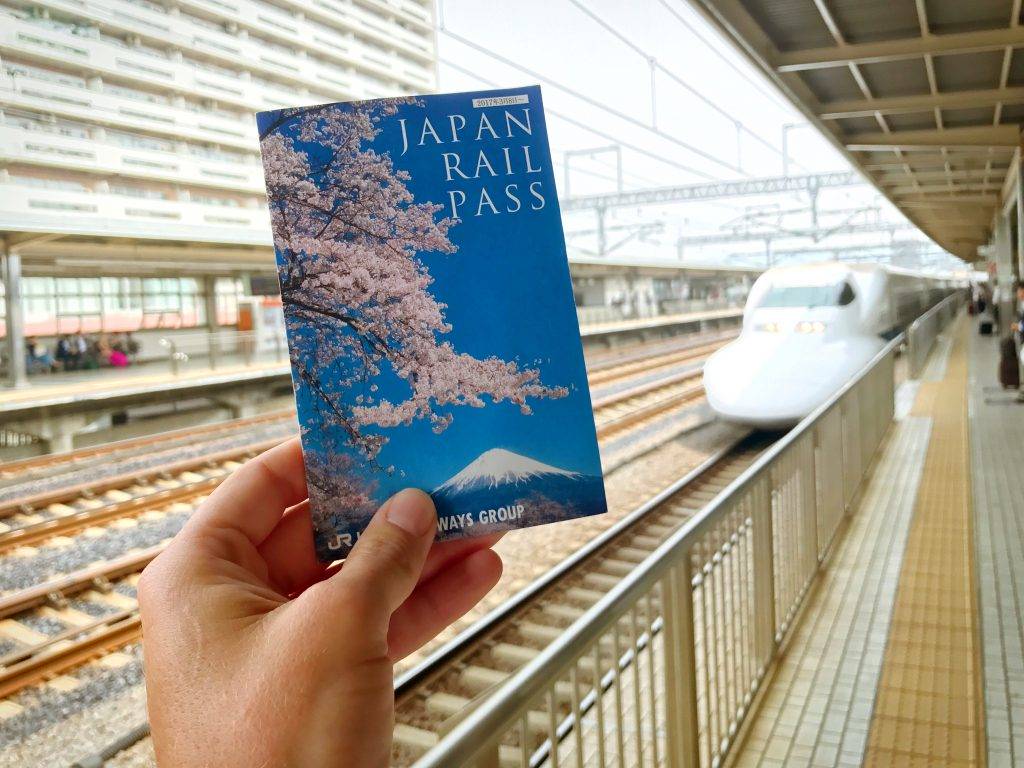
Caption: A traveler using a Japan Rail Pass at a Shinkansen gate.
Unique and Scenic Train Journeys in Japan
Japan isn’t just about high-speed rail—the country also offers scenic train journeys through mountains, coastlines, and historic towns.
🌄 Must-Try Scenic Train Rides
🚂 Sagano Romantic Train (嵯峨野観光鉄道, Kyoto) – A picturesque ride through Arashiyama’s bamboo forests.
🚂 Gono Line (五能線, Aomori) – A coastal route with stunning views of the Sea of Japan.
🚂 Tadami Line (只見線, Fukushima) – A breathtaking route through snowy mountain landscapes.
🚂 Hisatsu Line (肥薩線, Kyushu) – A nostalgic steam train passing through Japan’s rural countryside.
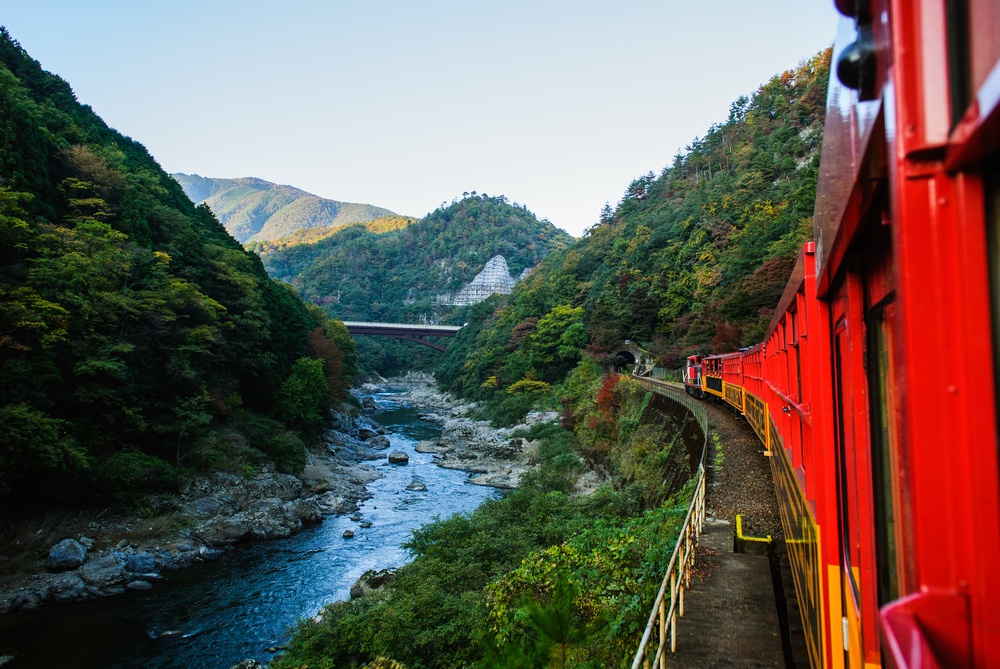
Caption: A scenic train ride through Japan’s countryside.
Conclusion
Japan’s railway system is more than just a mode of transportation—it’s an experience. From the ultra-fast Shinkansen to nostalgic countryside trains, Japan’s railways blend cutting-edge technology with cultural heritage.
🚆 Whether you’re a daily commuter or a first-time visitor, Japan’s trains make travel seamless, efficient, and unforgettable.